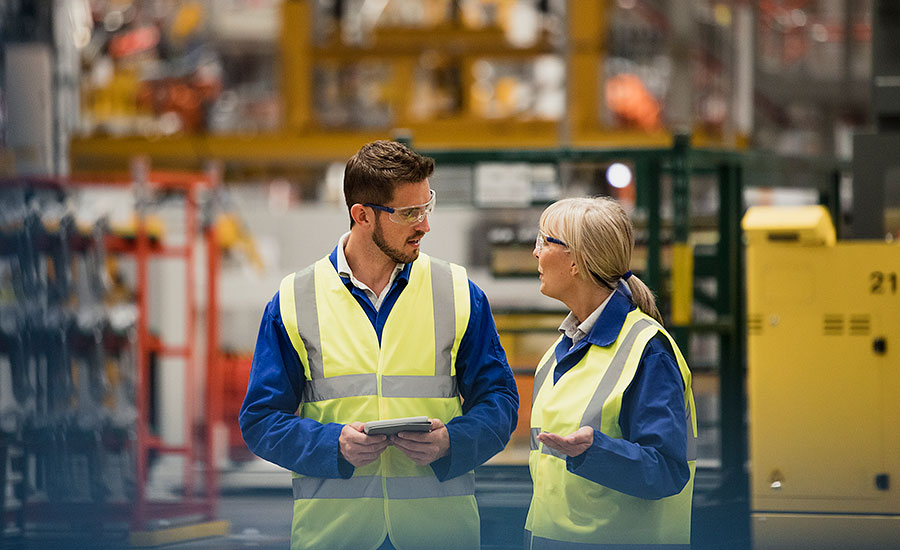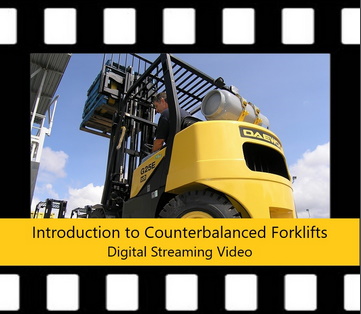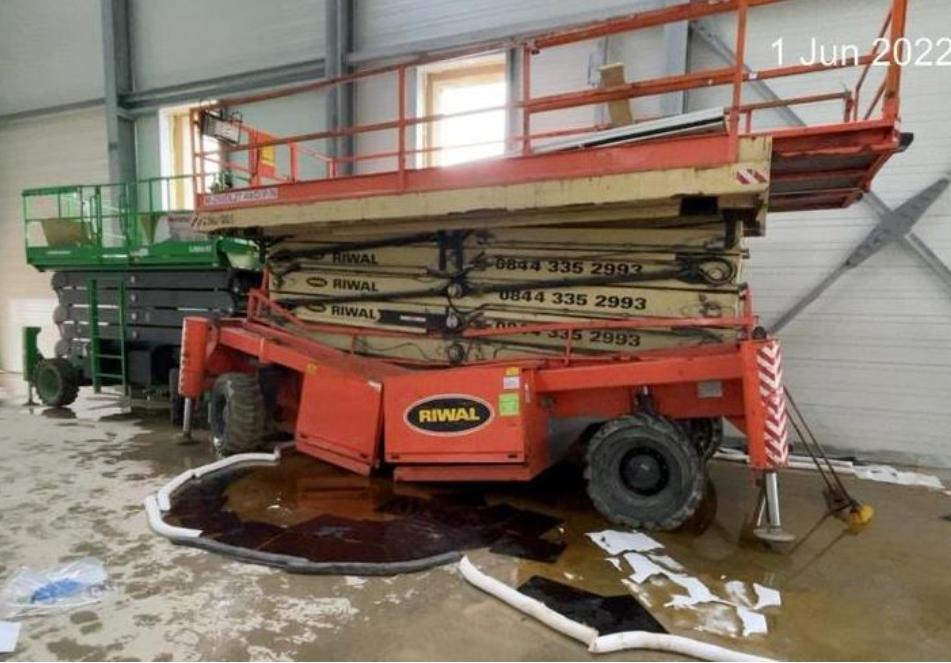 Understanding positive and negative behavioral habits helps increase safety.
Understanding positive and negative behavioral habits helps increase safety.
Behavioral safety has had a significant impact on making the American workplace safer in recent years.
Observing behaviors can help to identify unsafe acts and conditions and provide a tool to help correct both.
We can improve upon the behavioral observation system using the psychology of habits.
Developing habits is an effective way to make safety corrections more permanent.
When employees are coached to change the way they are conducting a job to make it safer, we can put the power of habits into that change.
How habits are created
There are two main ways we create a habit.
First, a traumatic psychological experience, such as when you were young and accidentally touched a hot stove.
You immediately learned a new habit not to touch a hot stove and it stuck with you.
Second and most common is repeated actions the brain turns into an automatic function.
The common belief is it takes 21 days to form a new habit.
However, this time frame is considered a best-case scenario.
In fact, according to the European Journal of Social Psychology’s “How Are Habits Formed: Modelling Habit Formation in the Real World,” the median time frame to form a habit is about 66 days.
When you first started driving and were told by law you had to wear a seat belt, it may have been difficult to form this habit.
For those who remember the olden days when seat belts were not mandatory, it was hard to break the old habit of not having or wearing a seat belt.
You had to consciously make an effort to put the seat belt on every time you got in the car for a long period of time to make it a habit.
As with any training or safety process, you must prove to the attending employee, “What’s in it for me?”
To motivate employees to work at creating a new habit, you need to demonstrate how a safety habit could benefit both their personal and work life.
This could be anything from a good feeling for a job well done to monetary incentive and feedback for doing the correct action upon observation.
The habit loop
Some researchers have identified a technique for creating good habits known as a “Habit Loop”.
Within this technique, each behavior consists of a loop comprised of three components: a cue, a routine and a reward.
One leads to the other and then repeats to form a habit.
According to SafeStart’s “The Habit of Safety,” this may have to take place multiple times daily over several months, depending on how complex the habit.
For example: You get into a car (the cue), You put on your seat belt (the routine) you don’t worry about police giving you a ticket (the reward).
Bad habits can form the same way:
For example: You are driving your car (cue), you talk to your spouse on the phone (routine) You get a warm feeling (reward), even though you know it may be illegal to be on the phone in your location.
It may be difficult to break a bad habit because it requires focus and concentration.
Studies show most people are not able to maintain focus long term.
In fact, common estimates for sustained attention to a freely chosen task range to a maximum of around 20 minutes in adults.
In most cases, people may need the help of others or physical aids to get them refocused.
How to develop a new habit
- Decide to form a certain habit, for example, to always wear a hard hat when you get out of your car at a construction job-site.
- Never allow an exception. Don’t let yourself off the hook, and discipline yourself every time until it is automatic. If you leave your hard hat at home, go home and retrieve it.
- Tell others about the new behavior. You will be more determined and disciplined when you know others are watching you. If others know you are working to form a safety habit, they can help motivate and keep you moving forward.
- Visualize your new habit. The more often you imagine yourself acting out the new habit, the more rapidly this behavior will be accepted in your subconscious mind and become automatic.
.
- Create an affirmation you repeat over and over. Say something like, “Every time I get out of the car, I will put on my hard hat.”
- Resolve to persist. The longer and more often you do something, it will make you feel uncomfortable if you do not follow the action. For example, “When I get in a car and don’t put on the seat belt, I feel strange, like something’s wrong.”
- Reward yourself. This can include a good thought about how professional you are or how good it makes you look when you wear your hard hat. Put in a piece of gum, eat a small candy. Each time you reward yourself, you reaffirm and reinforce the behavior.
While wearing a hard hat may sound simple, how many times have you been on a construction job-site and workers still don’t wear them?
Now look at even more complex situations on job-sites, such as tying off when over six feet off the ground to prevent a fall.
These will probably take more time to develop into a habit.
This habit system can be used to correct a multitude of unsafe behaviors.
In addition to job-site safety, distracted driving may be one of the most relevant and critical ways to use habit-forming processes.
In today’s world, distracted driving is one of the leading causes of car crashes, vehicle damage and physical injuries.
Imagine if no one ever used a cell phone while driving and if everyone had the habit of using only hands-free calling and never texting.
This is one area that forming good habits can make a significant impact.
Applying safety habits for a safer workplace
As a company, use behavioral safety audits to identify unsafe acts and use accident investigation to identify your most common cause of accidents.
Then focus on a habit that could eliminate that behavior or cause.
Possible Safety Habit Targets with Actual Past Accident Results:
Don’t touch cellphone while driving
Reaching for cellphone: A head-on collision
Hook lanyard up every time you enter lift equipment
Employee did not tie off, hit hole, lift bounced them out and died on impact
Never touch electrical systems without verifying power is out to all components
Electrician did not test all parts of a transformer, contacted live connector, and electrocuted themselves
Don’t eat food while driving
Driver looked down to find French fries and rear-ended car in front
Don’t text while driving:
Driver rear-ended car in front
Use three points of contact when getting in or out of trucks and equipment
Slip and fall getting out of tractor truck while holding a briefcase in one hand
By using the science of habit change, we can help make our employees safer, make the safety changes we desire more permanent, help to eliminate the “brain lapse moments,” create greater safety awareness in all workers, and help to increase focus while conducting our everyday work tasks.
Apply these tips to retaining new habits at work and home:
- Leave yourself reminders. A sticker on your dashboard, etc.
- Prepare for slip ups. It may take a while to remember the habit.
- Let go of the “all or nothing” mindset. Just because you forget once, don’t give up. (Remember, Rome wasn’t built in a day.)
- Do not try and form/change multiple habits at once. Your mind may have trouble with that and will either not form any habits or will form weak ones that can easily change back. Focus on one thing until it becomes habit, then move on to the next thing.
- According to DevelopGoodHabit.com’s “How to Build New Habits That Stick”, anchor a new habit on an established routine; focus on small habits; mark a calendar to keep record of the days you do the new action; and reward important milestones.
Use the new habits you’ve established to build a new positive identity.
Author James Clear often talks about something he calls “identity-based habits.”
The idea is you can build a lasting habit by making it a reflection of who you are on the inside.
You can tell yourself, “I’m the type of person who always wears a hard hat at the job.”
 Product Feature: Safety Training Videos
Product Feature: Safety Training Videos
Our safety training videos are available for a variety of equipment including forklifts, mobile elevating work platforms and loaders.
Each video is professionally produced and are of the highest quality and technical accuracy.
All videos excel at conveying sound principles of safe operation to operators in a positive manner without relying on gory footage or negative methods.
¿Hablas español? Select videos are also available in Spanish.
 Incident Report: Lumber manufacturer faces $54k USD fine after worker was killed by forklift.
Incident Report: Lumber manufacturer faces $54k USD fine after worker was killed by forklift.
A lumber manufacturer faces a near-$54,000 fine after one of its workers was struck by a forklift and died, the US Department of Labor (DOL) said.
The 45-year-old worker suffered fatal injuries after a forklift struck her as she walked across a lumber shipping yard operated by Sunbelt Forest Products in Athens, Alabama, on November 15, the DOL
said Monday.
The company's failure to follow federal safety standards contributed to the incident, the DOL said.
Investigators at the DOL's Occupational Safety and Health Administration (OSHA) cited the company on
May 10 and proposed $53,866 in penalties.
OSHA said the company hadn't marked separate travel paths for trucks, forklifts, and pedestrians "in any way" and allowed employees to walk where forklift drivers couldn't see them.
This exposed workers to hazards, it said.
A forklift typically weighs between 4,000 and 9,000 pounds and "poses significant risk of severe injury or death to workers who may be struck by this equipment," Ramona Morris, OSHA's area director in Birmingham, Alabama, said in a statement.
Sunbelt Forest Products is headquartered in Florida and supplies pressure-treated lumber and wood to distributors including Lowe's and 84 Lumber along the East Coast and across some parts of the Midwest.
Sunbelt Forest Products is owned by UFP Industries.
Sunbelt Forest Products and UFP didn't immediately respond to Insider's requests for comment made outside of regular working hours.
At the time of the incident, Sunbelt Forest Products President Ken Dell Donne told News 19 that the company was investigating.
"The employees in our Athens plant are a close-knit group and we share their sadness at the loss of our colleague," Donne added.
 Ask Bob
Ask Bob
Free technical support for all IVES Certified Trainers!
Question:
Hi Bob!
Does a truck mounted boom fall within MEWP certification standards?
Answer:
Great Question!
The bucket trucks fall under the A92.2 standards and not the current A92.22/.24 standards.
They still require training and have annual inspections under the A92.2 standard but do not fall under the same classifications for Types/Groups.
Have a great day.
Bob
Interesting Articles
- The next senior sport craze, forklift racing? [VIDEO]...more.
- Georgia factory fined $190k by OSHA...more.
- Excavator operator hospitalized after toll-over incident...more.
- 24 year old killed in forklift accident...more.
- Farmer rushed to hospital after being trapped underneath Front-End Loader...more.
- Online fundraiser to help worker injured in boom lift accident...more.
- Scissor Lift structural failure...more.

 Client Testimonials
Client Testimonials
"I felt that the training was very informative. I particularly liked the opportunity of testing initially then testing after the training and being able to see how much of a difference the training made." Rocmone, Custom Forklift Train the Trainer Program.
"I’ve attended dozens of certification/refresher classes in the past 15 years and this was by far the most in depth as well as informative I have been a part of." Jason, Custom Train the Trainer Program.